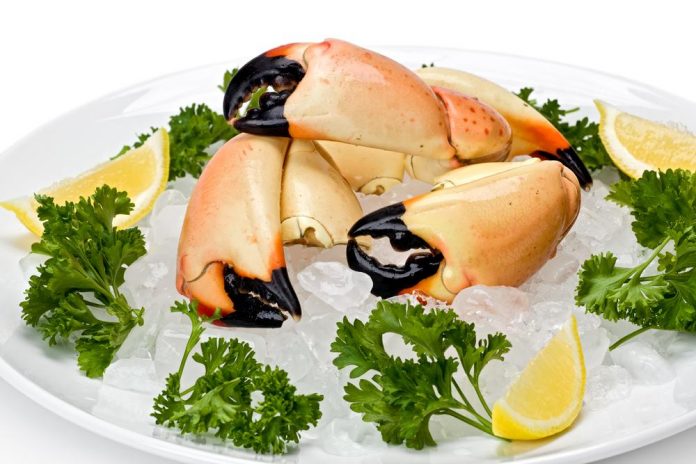Clawfully good
There is a hard and an easy way to wrap your pinchers around some stone crabs. But watch out, they don’t let go.
By TERRY TOMALIN, Times Outdoors Editor
Published December 17, 2004
OZONA – There are two ways to get stone crabs.
First, the hard way: Put on a wet suit, strap on a scuba tank, wait for slack tide and dive the rubble along a causeway or bridge.
If you are lucky you might get a dozen claws in an hour’s dive. But be careful, the stone crab’s large claw is a crusher.
Many a crab diver has wound up with a blackened fingernail that would make Marilyn Manson proud after one of these highly prized crustaceans got hold of a digit and refused to let go.
Stone crab diving isn’t for those with slow reflexes. If anything, diving for crabs is a labor of love. To be successful you must cherish the hunt more than the catch.
Of course, there is an easier way.
After 15 years of heading out at the crack of dawn on Oct. 15, I took the lazy man’s path and called the Suncoast stone crab king, Billy Moore.
“I know just where to go,” said Moore, who runs Billy’s Stone Crab on Tierra Verde. “There are these two guys in Ozona.”
David Missigman and David Lane saw a need for a high-quality stone crab processing facility within a few minutes drive of the water in central Pinellas County.
“The crabbers don’t have time to cook the crabs,” said Missigman, who along with former stone crabber Lane started the Ozona Crab Company six years ago. “We provide a place where they bring their product and have them processed in a clean, professional environment.”
While stone crabs are found from North Carolina to the Yucatan Peninsula and east through the Bahamas and the Greater Antilles, Florida is the commercial capital for the shellfish.
The stone crab has the honor of being the only sustainable marine resource in the United States. The crabs have two tasty, meat-filled claws, and when a diver grabs one and applies a little pressure, the crab simply releases it.
The crab is returned to the water alive, and research has shown that about 20 percent of the claws measured in fish houses have been regenerated, proof a crab can survive after being declawed.
Recreational stone crabs account for just a small amount of the harvest. Most crabs are taken in traps and sold to seafood houses, such as the Ozona Crab Company.
“We usually get them within 20 minutes of coming off the boat,” Missigman said. “The key is to keep them soaking in sea water, then put them right in the pot.”
Missigman boils his crabs for eight minutes at 160 degrees. He flushes them with cool, fresh water, then ices them.
“You want them to be chilled but not frozen,” he said. “About 99 percent of what we process here is shipped out of the state. Our crabs can be anywhere in the country in 12 hours.”
Crabs are usually graded into three sizes. The average is 3-5 ounces, but occasionally Missigman comes across a true jumbo claw.
“The largest I have ever seen was 15 ounces,” he said. “That is one big claw.”
Crabs can be served hot with butter or cold with mustard sauce.
The Ozona Crab Company sells crabs to select area restaurants and to a loyal following in the area.
“But there are other ways to get crabs besides diving for them,” said Lane, Missigman’s partner. “Just head out to any flat on a low winter tide, and you’ll find crabs hiding in the holes. You can just walk along and pick them up.”
- Jay Mastry - March 26, 2024
- Captains Corner, Gorta - March 23, 2024
- Dave Zalewski - March 12, 2024











